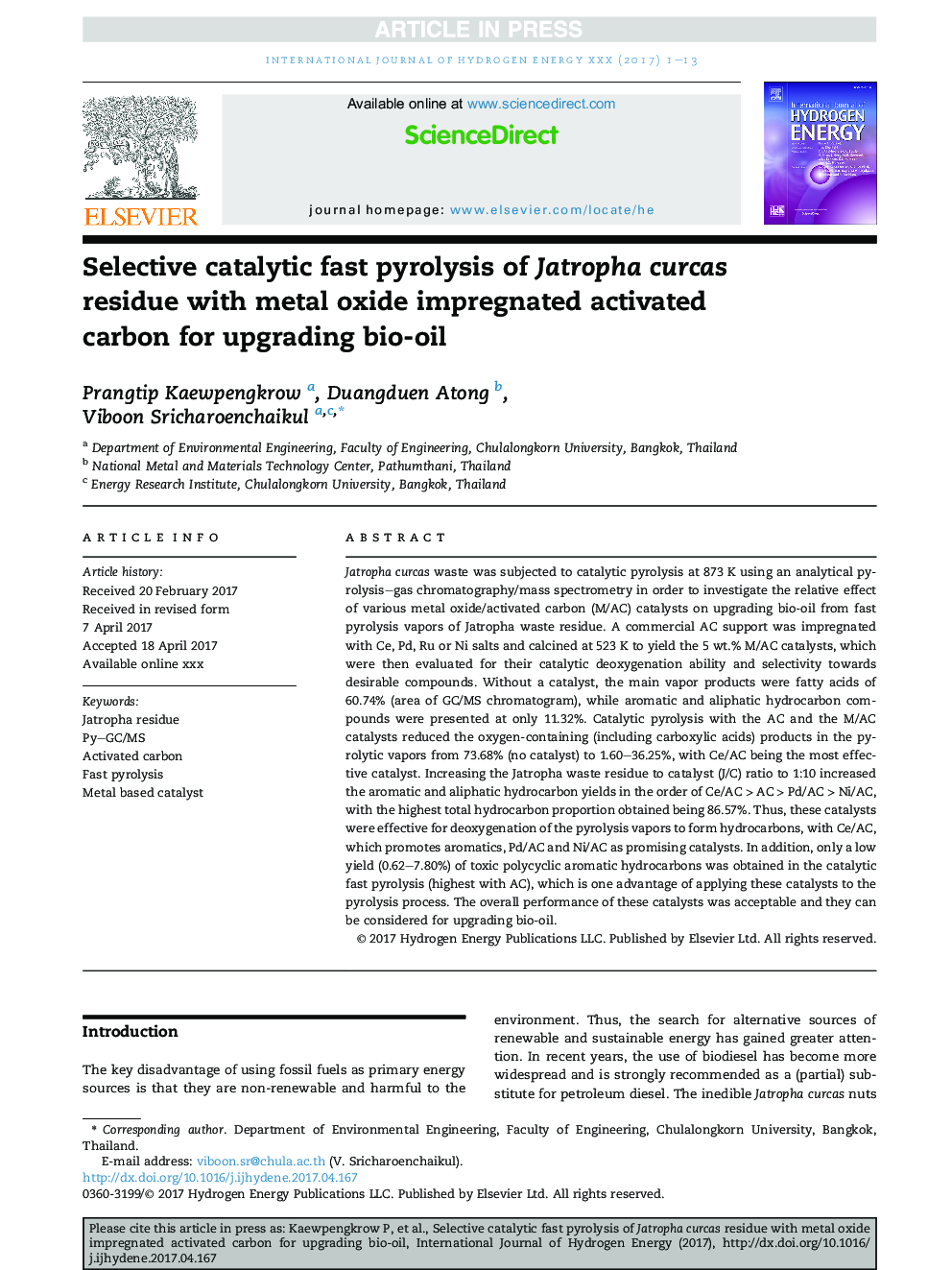| Article ID | Journal | Published Year | Pages | File Type |
|---|---|---|---|---|
| 5146203 | International Journal of Hydrogen Energy | 2017 | 13 Pages |
Abstract
Jatropha curcas waste was subjected to catalytic pyrolysis at 873Â K using an analytical pyrolysis-gas chromatography/mass spectrometry in order to investigate the relative effect of various metal oxide/activated carbon (M/AC) catalysts on upgrading bio-oil from fast pyrolysis vapors of Jatropha waste residue. A commercial AC support was impregnated with Ce, Pd, Ru or Ni salts and calcined at 523Â K to yield the 5Â wt.% M/AC catalysts, which were then evaluated for their catalytic deoxygenation ability and selectivity towards desirable compounds. Without a catalyst, the main vapor products were fatty acids of 60.74% (area of GC/MS chromatogram), while aromatic and aliphatic hydrocarbon compounds were presented at only 11.32%. Catalytic pyrolysis with the AC and the M/AC catalysts reduced the oxygen-containing (including carboxylic acids) products in the pyrolytic vapors from 73.68% (no catalyst) to 1.60-36.25%, with Ce/AC being the most effective catalyst. Increasing the Jatropha waste residue to catalyst (J/C) ratio to 1:10 increased the aromatic and aliphatic hydrocarbon yields in the order of Ce/ACÂ >Â ACÂ >Â Pd/ACÂ >Â Ni/AC, with the highest total hydrocarbon proportion obtained being 86.57%. Thus, these catalysts were effective for deoxygenation of the pyrolysis vapors to form hydrocarbons, with Ce/AC, which promotes aromatics, Pd/AC and Ni/AC as promising catalysts. In addition, only a low yield (0.62-7.80%) of toxic polycyclic aromatic hydrocarbons was obtained in the catalytic fast pyrolysis (highest with AC), which is one advantage of applying these catalysts to the pyrolysis process. The overall performance of these catalysts was acceptable and they can be considered for upgrading bio-oil.
Related Topics
Physical Sciences and Engineering
Chemistry
Electrochemistry
Authors
Prangtip Kaewpengkrow, Duangduen Atong, Viboon Sricharoenchaikul,
